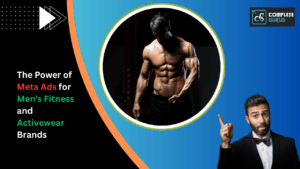In the fast-moving world of women’s fashion, trends evolve daily—but data is your constant. For brands trying to stay ahead of the curve, Google Ads data offers a goldmine of insights that can elevate your marketing, drive sales, and connect you more deeply with your ideal customers.
Fashion is not just about aesthetics anymore; it’s about strategic visibility, targeted messaging, and data-driven decisions. If you’re not leveraging your Google Ads data to shape your strategy, you’re leaving money—and valuable customer insight—on the table.
In this blog, we’ll break down how to use Google Ads data for fashion brand refinement, backed by actionable steps to align your campaigns with customer behavior.
Why Women’s Fashion Brands Should Prioritize Google Ads Data
Women’s fashion is one of the most competitive industries online. Standing out requires more than creative design and trendy pieces—it needs laser-focused ad targeting, optimized spending, and customer segmentation.
Google Ads isn’t just a traffic driver—it’s a data engine. Every click, impression, and conversion tells a story about your market. The key lies in how you read and act on that data.
By analyzing data from your campaigns, you can:
- Discover high-performing keywords
- Identify audience segments that convert
- Optimize ad copy and visuals
- Refine your landing page experience
- Improve ROI and reduce wasted spend
If you’re unsure how to analyze and implement these strategies, our digital marketers can help.
Step 1: Understand Your Key Google Ads Metrics
Before jumping into optimization, it’s essential to know which metrics matter most for your fashion brand. Here are the top data points you should be monitoring:
1. Click-Through Rate (CTR)
This tells you how compelling your ad is. A high CTR means your copy and visuals resonate.
2. Conversion Rate
Out of all the people who click your ad, how many actually buy? This is your ultimate success metric.
3. Cost per Conversion (CPA)
How much are you spending to make one sale? Lowering this increases your profit margin.
4. Search Term Reports
This report shows the actual queries that trigger your ads. It’s invaluable for keyword expansion and negative keyword filtering.
5. Audience Demographics & Interests
Google Ads provides data on age, gender, location, device usage, and user interests—perfect for fashion targeting.
Step 2: Segment Audiences by Style & Buyer Intent
Women’s fashion is not a monolith. Some customers love athleisure, others prefer boho or corporate chic. Use Google Ads audience segmentation to tailor your messaging to style-specific interests.
How to do it:
- Use Custom Intent Audiences to target users based on their search habits
- Analyze demographic data to match styles with age groups (e.g., Gen Z vs. Millennial)
- Create ad groups by collection or trend, not just product type
Want tailored campaign designs that match your brand vibe? Hire a designer from our team to bring your ads to life.
Step 3: Use Location & Device Data to Tailor Ads
Is your audience mainly shopping from mobile devices during lunch breaks or from desktops in the evening? Are certain cities or states converting better?
Location and device targeting are crucial. For example, winter coats may perform better in colder regions. You can increase bids for high-converting locations and reduce spend in underperforming ones.
Use geo reports in Google Ads to:
- Prioritize high-conversion regions
- Adjust ad copy for localized trends
- Align offers with local seasons or events
Step 4: Optimize Your Landing Pages Based on Ad Data
Google Ads doesn’t operate in a vacuum. If users click but don’t convert, your landing page might be the issue.
Use your ad data to:
- A/B test headlines, product images, and CTAs
- Match landing pages to ad copy (message match boosts conversions)
- Analyze bounce rates and average session durations via Google Analytics
Need help building responsive, high-converting landing pages? Consider hiring a developer to integrate design, UX, and speed optimization.
The Art of Visual Storytelling in Women’s Clothing Ads for Social Media
 Step 5: Identify Winning Products and Campaigns
Step 5: Identify Winning Products and Campaigns
Which products or collections are driving the most clicks and conversions? Use Google Ads’ product-level data (especially for shopping ads) to spot trends.
Refinement tip:
- Double down on winning SKUs with higher ad budgets
- Pause underperforming items or reframe them in bundles
- Create lookalike campaigns based on your top buyers’ behavior
Step 6: Automate & Scale with Smart Bidding
Once you’ve gathered enough data, shift to automated bidding strategies. These use machine learning to optimize bids in real-time based on likelihood to convert.
Options include:
- Target CPA – if you have a consistent cost per sale
- Maximize Conversions – great for seasonal campaigns
- ROAS-based bidding – if you sell items with varied prices
Smart bidding paired with smart creatives = compounding success.
Step 7: Sync Data Across Platforms
Your fashion brand may also be running Meta (Facebook & Instagram) ads. Integrating insights from both platforms gives you a 360° view of your customer journey.
- Use UTM parameters to track behavior beyond clicks
- Compare audience overlaps between Google and Meta
- Retarget Google visitors with Meta ads and vice versa
Explore how Facebook Ads for niche industries are structured and apply similar principles to fashion.
Step 8: Forecasting and Financial Planning Using Data
Google Ads data also supports your financial and inventory planning.
Track and forecast:
- Seasonal trends in product interest
- Budget required for achieving revenue targets
- Inventory levels based on ad-driven demand
Looking to sync ad insights with your backend accounting systems? Our accounting service experts can help you align campaigns with budgets.
Step 9: Build a Continuous Feedback Loop
The best-performing fashion brands have a test-learn-refine loop. Use your Google Ads data to continuously:
- Test new collections
- Learn from ad performance
- Refine messaging, targeting, and offers
Be proactive with weekly performance checks and quarterly strategy reviews. It keeps your brand agile in a trend-driven industry.
If you’d like assistance developing this system, reach out to our team. We’re here to help fashion brands grow smarter.
Leveraging Seasonal Trends: Women’s Fashion Campaigns on Meta Platforms
Final Thoughts: Let Data Be Your Fashion Brand’s Superpower
Fashion may be fueled by creativity, but success in digital marketing is rooted in data. By leveraging Google Ads data for fashion brand optimization, you gain clarity on what’s working, what’s not, and where to invest next.
Start small, test everything, and keep learning. And if you need support—from campaign creation to advanced analytics—Complete Gurus is your growth partner every step of the way.
✅ Quick Summary: What to Do Next
- Monitor CTR, CPA, and conversion rate
- Segment audiences by style and interest
- Optimize landing pages using behavior data
- Use location/device insights to fine-tune ads
- Apply smart bidding to scale what works
- Sync data across platforms and teams
- Contact experts when in doubt!
Let your fashion brand make data as stylish as your clothing.
Because in 2025, the best-looking brands are also the best-performing ones.

I am Ashutosh – a seasoned digital marketer, bringing digital transformation to businesses, complementing businesses’ growth via generating qualified leads, drive site inbound traffic via organic and inorganic approach, & build their brands through useful, well-designed marketing strategies and Marketing Automation implementation via Chat GPT, HubSpot & Zoho.







